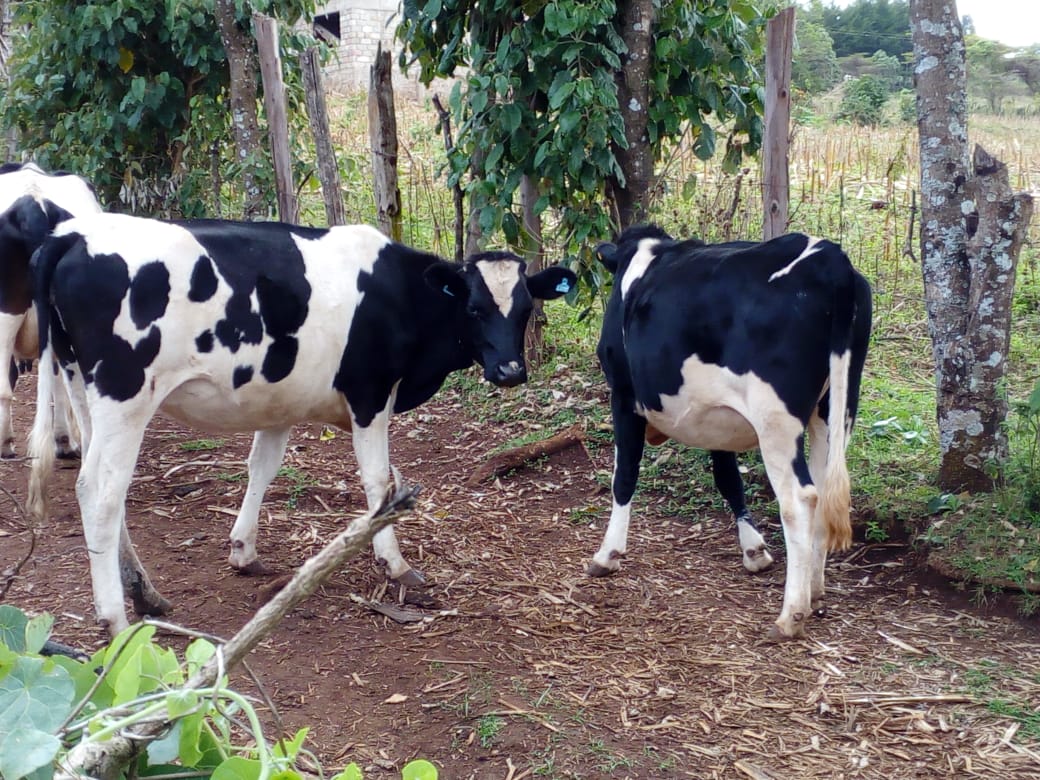In 2015, Dominic Kipkorir, 31, an IT Manager at a Nairobi based farm started dairy farming as a side hustle with two cows. Since then he has never looked back, he has since increased his herd to 18 dairy cows, eight lactating, four dry cows, six heifers (three already served) and six calves.
“My cows’ milk production capacity range from 12 – 18 liters a day earning me between Sh2,880 to Sh4,320 a day,” said Kipkorir.
“We sell our milk to local society Tanykina Dairies who later sell it to Brookside Dairies (Eldoret Branch) and well as the local vendors (to take care of feeds and paying casuals). Currently we earn Sh30 per liter but the prices keep fluctuating from time to time based on the demand, the lowest price in the last three years was Sh25 recorded in February 2019,”.
Kipkorir initially financed the project using his savings to buy two dairy cows at Sh90,000 from local farmers. He also took three sacco loans of Sh300,000, Sh400,000 and Sh600,000 between 2015 – 2017 (to scale up i.e. setup a proper feeding structure, feeds and purchase additional better performing dairy breeds.
In this, the feeding structure cost him Sh150,000, he bought a second hand silage chopping machine worth Sh150,000 and spent about Sh150,000 on planting and sourcing feeds (before starting to prepare my own feeds) and the rest on purchasing better yielding dairy cows over time)
“In 2017 I purchased six high yielding Friesian heifers aged between 10 – 15 months old (sourced from experienced farmers from Trans Zoia County and Nandi County at an average of Sh55,000 each”.
Related article
Urban dairy farmer defies all odds, builds a thriving venture in the city
Former driver becomes award winning dairy goat farmer
Star farmer: Dairy farming lifts Rift Valley farmer to national and international stardom

Some of the cows at Dominic Kipkorir's farm. Farmbiz Africa
Kipkorir is taking advantage of high milk demand by processors in Kenya to improve his dairy production. His farm is based in Uasin Gishu County, within Eldoret neighborhoods on a 20-acre size of land. He also grows feeds (maize silage) on eight-acre land parcels within the neighborhoods which he purchased at between Sh700,000 to Sh1.2m.
According to the Economic Survey 2019, the quantity of milk delivered to the dairy processors increased by 18.4 per cent from 535.7m liters in 2017 to 634.3m liters in 2018. In this, the quantities of milk and cream processed also recorded an increase of 10.6 per cent from 410.6m liters in 2017 to 454.1m liters in 2018. Processed butter & ghee and cheese also recorded increases of 10.8 per cent and 15.5 per cent, respectively, in 2018.
Some of the challenges he faces are price fluctuations, inadequate feeds, theft and low skill manpower.
“A liter of milk costs Sh30, however when you visit a supermarket, you will find that half a liter retails at between Sh55 to Sh60 yet the farmer has done more work, regulatory bodies such as the Kenya Dairy Board are not supportive to smallholder farmers,” he said.
There is also lack of adequate supply of feeds because of changing climatic conditions thus affecting production of the animals. Kipkorir has however, learnt to try as much as possible to stock enough feeds (maize silage) and hay as well as minimizing wastage by controlling the feeds given to the animals.
He engages veterinary officers every month when they are carrying out routine check-up and vaccination to train his farm hands on dairy production. This helps in preventing diseases such as mastitis, pneumonia on young calves and knowing when to serve cows by keenly observing heat signs.
Besides, dairy farming, he has diversified into bee keeping and currently has 50 bee hives.
“Bees have zero expense in terms of management and returns are promising. I spent a total of Sh100,000 and I have managed to save a lot of cost because I used timber available in the farm,” said Kipkorir.
In future he plans to add value to the milk so as to earn more income rather than selling raw milk which he says leads to exploitation of smallholder farmers.
















Comments powered by CComment